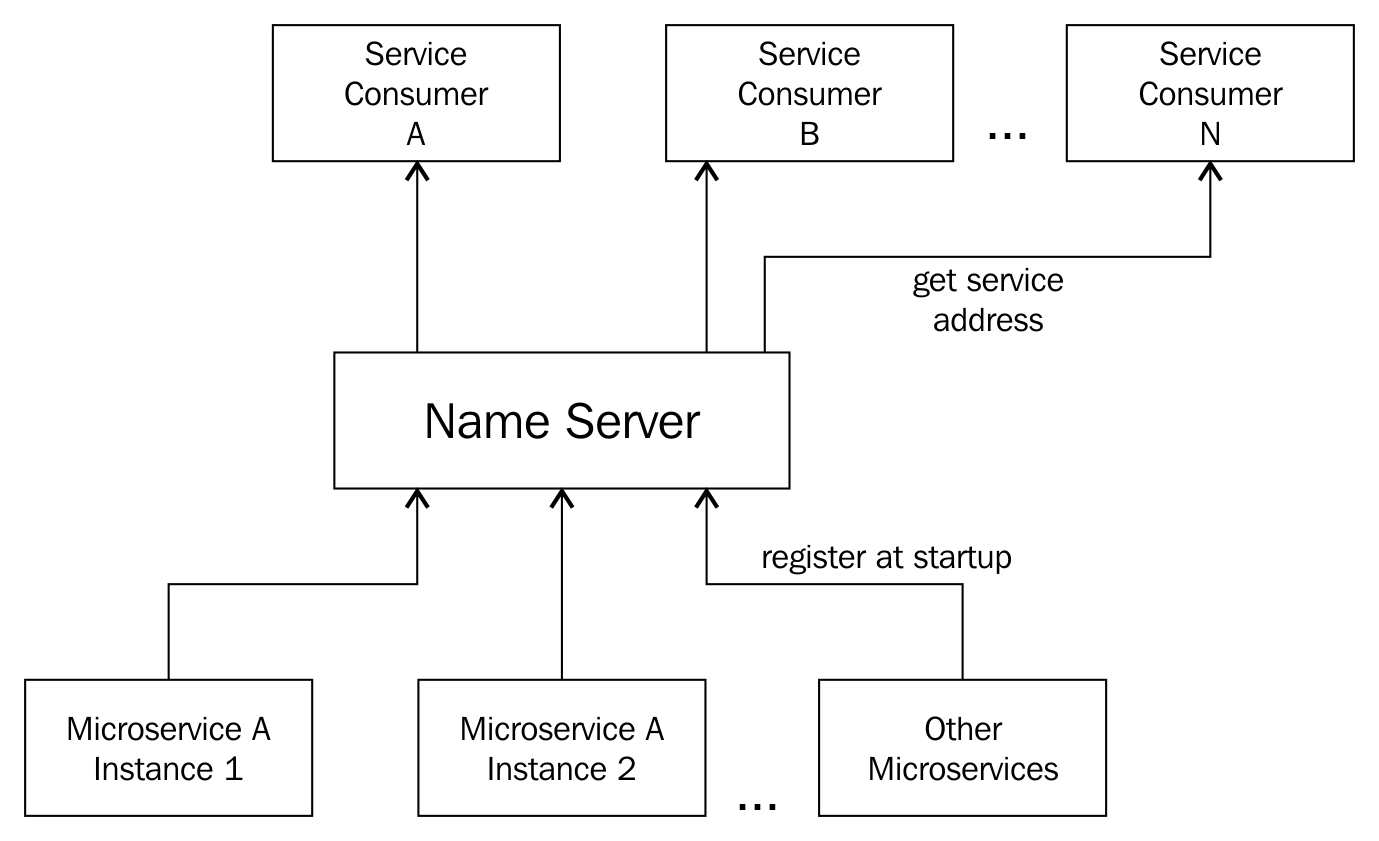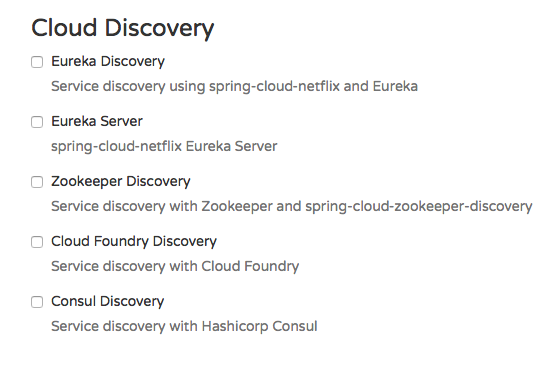Workings of Name server
The Name server is an ideal solution for the preceding situation. The following diagram shows how Name servers work:

All microservices (different microservices and all their instances) will register themselves with the Name server as each microservice starts up. When a service consumer wants to get the location of a specific microservice, it requests the Name server.
A unique microservice ID is assigned to each microservice. This is used as a key in the register request and the lookup request.
Microservices can automatically register and unregister themselves. Whenever a service consumer looks up the Name server with a microservice ID, it will get the list of the instances of that specific microservice.
Options
The following screenshot shows the different options available for service discovery in Spring Initializr (http://start.spring.io):

We are going to use Eureka as the Name server for service discovery in our example.
Implementation
The implementation of Eureka for our...




































































